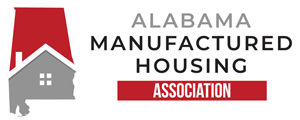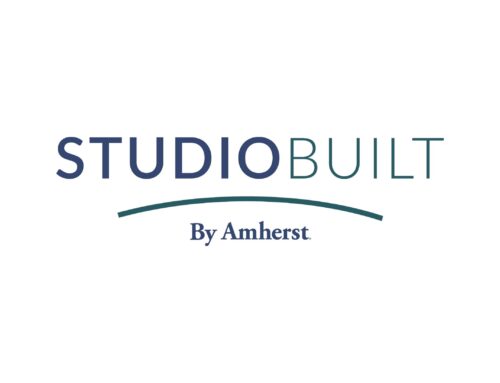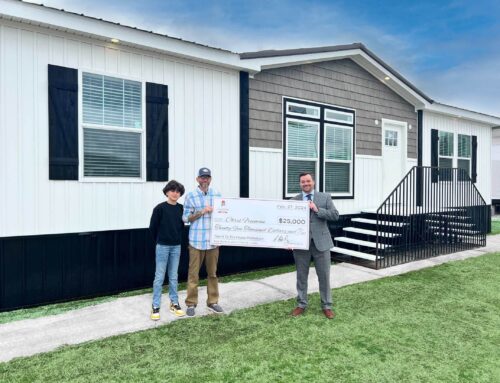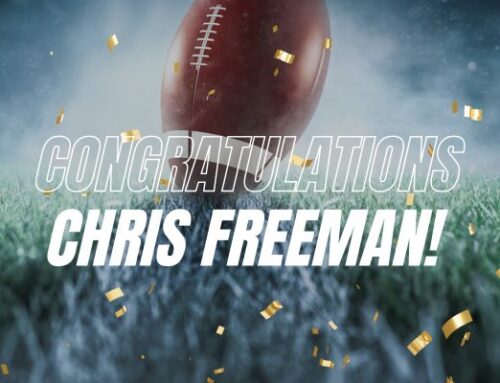
Evolving Financial Benefits with Manufactured Housing
You might be surprised to find that there are a number of financial benefits when it comes to manufactured housing, the production of such structures, and associated costs. It almost seems too good to be true, but it isn’t!
Our friends at Bank Rate paint the picture perfectly: “Imagine building a brand-new car in your driveway. Every part would be hauled in to be assembled on-site by subcontractors. It might take several weeks of coordinated effort by a variety of experts to execute the final product.”
They continue, “This kind of service would cost a lot more than a factory-built car delivered to you completed. And, in reality, the factory-built car is probably no less safe or well-built than the car made on-site. The idea of building custom cars in driveways seems absurd, yet this is how we traditionally build homes in the United States.”
Manufactured homes are assembled off-site and are transported and fixed to a permanent site after completion. In reality, the process, means and costs of constructing a home in such a way holds great benefits that potential homebuyers often, and mistakenly, overlook. However, the cheaper, faster build and more environmentally progressive means of producing a manufactured home can make home-owning affordable for many who think it seems impossible. Not to mention, financing manufactured homes is easier now than ever before.
Manufactured Homes Boast Cost-Effective Benefits
Less Expensive Build
The average sales price for a manufactured home is typically lower than that of site-built construction. Similar to how Bank Rate described the situation in the car-building metaphor, the savings result from the fact that manufacturers purchase high volumes of materials and build these homes in factories, under controlled conditions. They also stem from the fact that manufactured homes offer buyers more flexibility in choosing a location (more affordable property options).
For example, compared to a site-built home that is located in a neighborhood with numerous amenities, manufactured homebuyers can choose to place their off-site produced home on land already owned, rented, or in a land-lease community. Furthermore, the manufactured homebuyer will have their own place to stay with the completion of the build, meaning they likely will no longer have to cover uncontrollable rent increases (if they own the property).
Timeliness
With such an efficient process, manufactured homes require a fraction of the time site-built homes take to assemble from start to finish – overall saving time, manpower, and associated expenses. Because nearly all of the work is completed in a factory, there are no weather delays, material issues, or subcontractor issues. The homes are built to code and inspected by a third-party in the factory, then inspected again by an inspector from the Alabama Manufactured Housing Commission once they’re affixed to their permanent site.
For example, the impressive build speed has made these homes popular among California wildfire victims, says Bank Rate, who face high construction costs and slow build times. Many of the homeowners want to rebuild, but there’s just not enough construction manpower, which means building costs can be exorbitant. On top of that, they’re facing a three- to five-year build time, which means they have to pay rent while they wait.
Financial Security
Buying a manufactured home brings with it stability in the same way a traditional home does. Besides knowing the monthly mortgage payment rate, the owner will have their own place to renovate and upgrade as they please.
Also, because a manufactured home is less expensive to build than a traditional, site-built home, they’ll likely only be responsible for a smaller manufactured home loan. A smaller loan translates into fewer monthly payments and less overall interest paid over time. Considering that modern manufactured homes are energy efficient as well, they often cost less to heat and cool compared to existing site-built homes. The benefits are vast.
When it comes to handling finances, there are two other advantages associated with buying a manufactured home. First, the homeowner will live in their manufactured home “for free” once the loan is paid off. Second, among other benefits, the homeowner has the potential to rent out the property to tenants if they ever decide to buy a second home. Manufactured home ownership also brings a series of tax benefits in the form of deductions.
Collateral Potential
There are many opportunities to add value to a manufactured home. For instance, the manufactured homeowner can opt for different home upgrades such as eco-friendly features, room additions, garages, decks, sheds, etc.
A long-standing argument against manufactured homes is that they lose their value, making them a risky option for those looking to build equity. Yet an Urban Institute report shows that, as long as homeowners own the land their home is on, the opposite holds true. The home price index for manufactured homes featured an average annual growth rate of 3.4 percent, versus 3.8 percent for traditional, site-built homes, the study shows.
By choosing certain home improvements that can increase the home’s value, the owner will have more equity in it to potentially qualify for a home loan sooner than expected or get approved for a higher loan amount. Although getting a home equity loan for a manufactured home can be difficult, there are nationwide manufactured home lenders who are ready to offer traditional home equity loans or cash-out refinances.
Mortgage Flexibility
New mortgage options are also expanding the financing opportunities associated with manufactured homes. Earlier this year, Fannie Mae introduced MH Advantage. The program says homes must meet certain requirements to be eligible for the loan program and, if they do, they receive great benefit. These requirements are designed to make eligible homes fit in seamlessly with their stick-built counterparts in neighborhoods. MH Advantage requirements include:
- Attics must be 6 inches or greater
- Energy-efficient features must be incorporated into the structure
- Drywall must be present throughout the home
- Solid wood or veneer kitchen and bathroom cabinets must be used
- The exterior siding must be fiber cement board, stucco, hardwood siding, masonry, stone or engineered wood siding
The program allows lenders to use comps of site-built homes, making it easier to qualify for a loan in a neighborhood of all or mostly site-built homes. The MH Advantage program allows borrowers to make a minimum 3 percent down payment, further assisting the path to homeownership.
At AMHA, we have a number of resources and additional information available for all. Review the endless resources on the AMHA website to learn more about the financial opportunities for manufactured home buyers and owners. Visitors can also connect with manufactured home retailers and communities via our directory.






